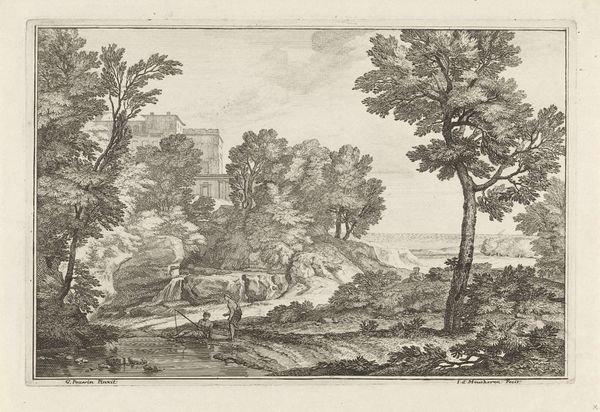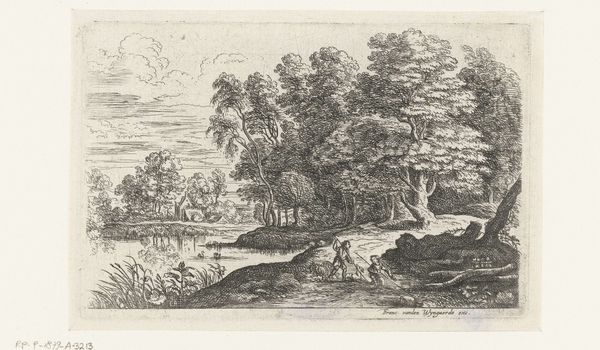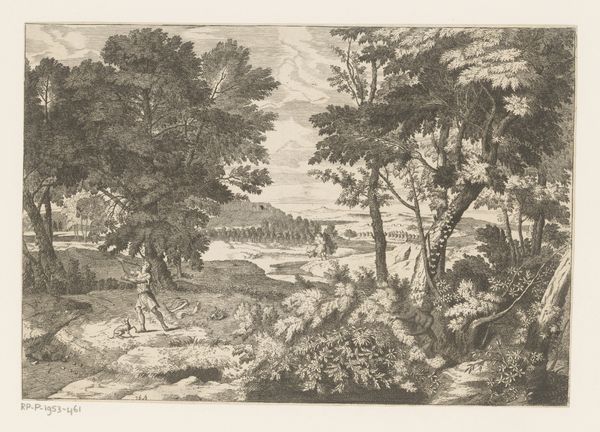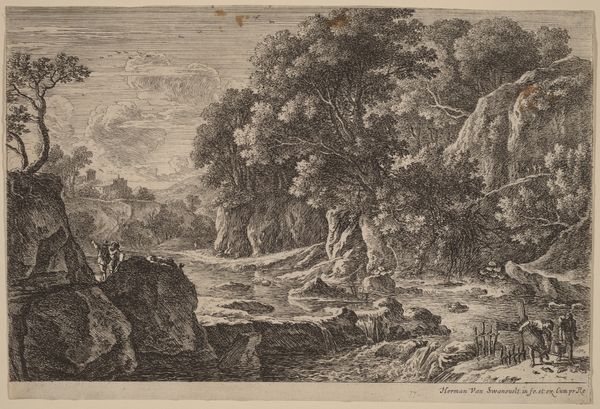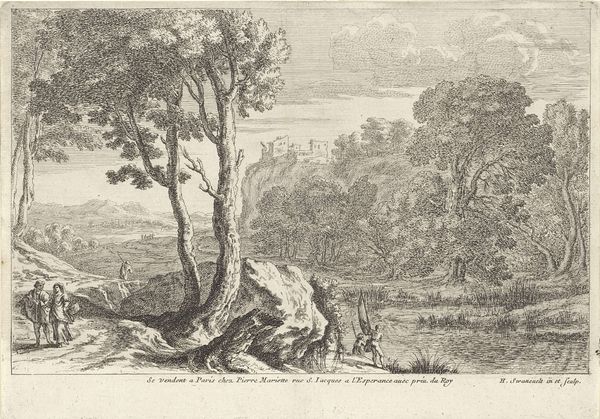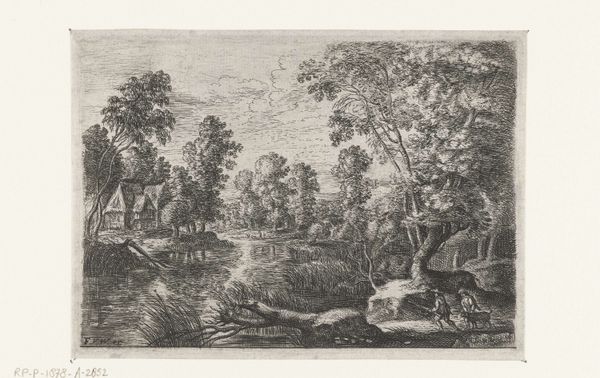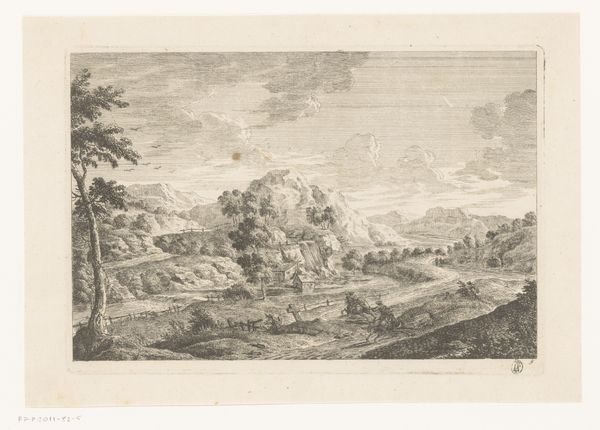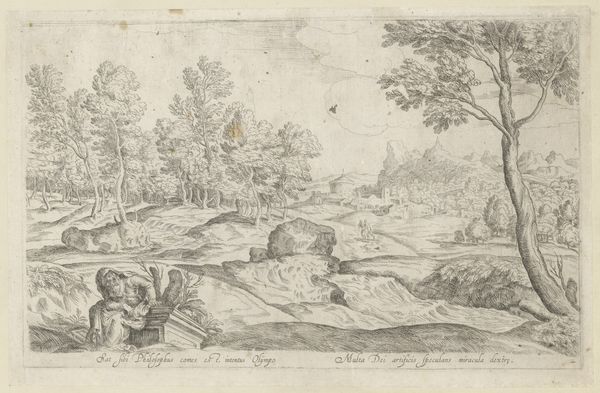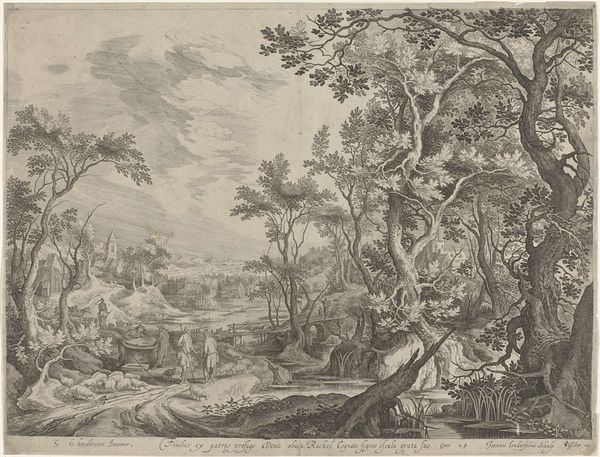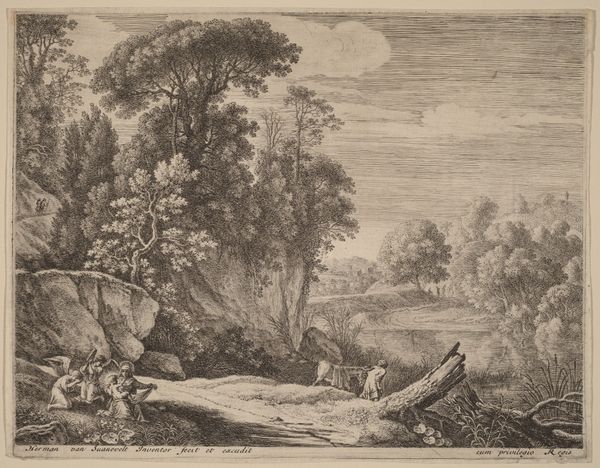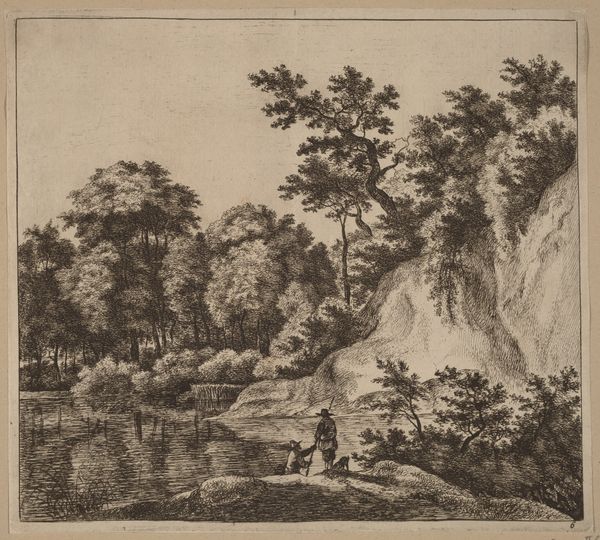
print, etching, paper, engraving
#
baroque
#
dutch-golden-age
# print
#
etching
#
landscape
#
paper
#
engraving
Dimensions: height 237 mm, width 382 mm
Copyright: Rijks Museum: Open Domain
Curator: Look at the intricacy of the lines in this etching and engraving. This piece, entitled "Landschap met grijsaard" or "Landscape with an Old Man," is thought to be from the 17th century. It is held at the Rijksmuseum and the artist is unfortunately unknown to us. Editor: It’s rather somber, wouldn’t you agree? Even the landscape seems to droop, mirroring the posture of the hunched figure in the foreground. What kind of paper would have been used, and where would that have come from? Curator: Likely linen-based, maybe even hemp, from mills operating across Europe at that time. Its endurance through centuries really speaks to the craftsmanship and care involved in its production. Printmaking flourished in the 17th century, with cities like Amsterdam becoming centres for dissemination of imagery and ideas. Prints became cheaper forms of visual information and popular modes of communication. Editor: Absolutely. The layering of the engraving also really brings a starkness to the medium that I would not otherwise anticipate. It makes me consider the societal function, what was it that prompted such imagery? Curator: Well, this era was characterized by socio-political upheaval with the Dutch Golden Age, alongside widespread access to visual information, religious reforms and landscape painting capturing a burgeoning sense of national identity and control. A sombre landscape with an aged man would have likely invoked ideas about time and resilience of everyday existence in the face of dramatic cultural change. Editor: Yes! The relationship between the lone figure, nature and time seems so important. Curator: It is also possible that with its limited inscription, that it would have been designed as an element of a book with larger text providing additional contextual narrative. It could function almost as an illustration to some religious or mythological poem or story that helped expand social or intellectual discourse during the time. Editor: Considering the cost-effectiveness, the proliferation and availability, even the tactile labor, gives you an idea about art creation as being linked to economic and intellectual distribution and to me that’s important! Curator: Indeed. "Landschap met grijsaard" provides a rich visual field and allows us a look into 17th century social-historical thought through an everyday aesthetic object. Editor: Exactly! The details embedded are invaluable in that context and reveal interesting things about its original setting.
Comments
No comments
Be the first to comment and join the conversation on the ultimate creative platform.
